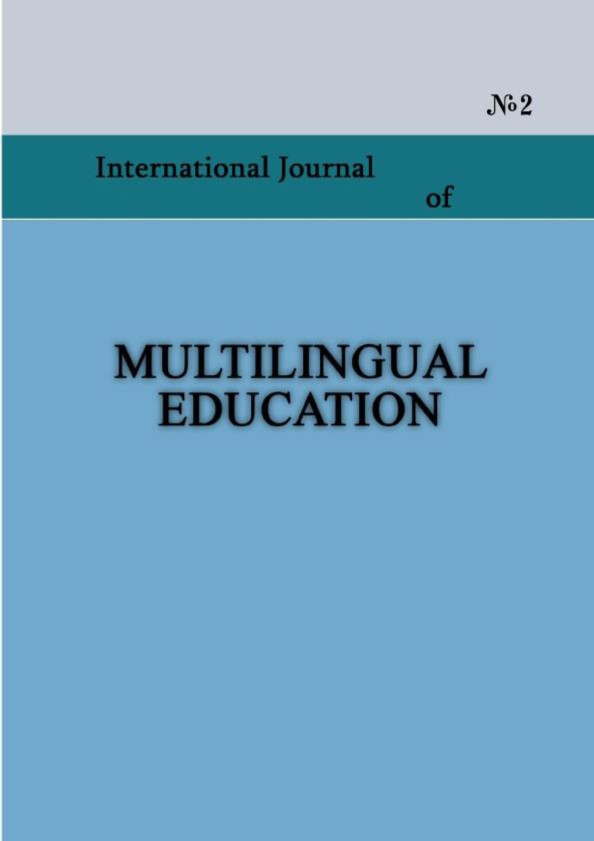COMMUNICATIVE LANGUAGE TEACHING: MANAGING THE LEARNING PROCESS
Keywords:
communicative language teaching, communicative methodology, learner-centeredness, communicative curriculum, needs analysis, curriculum content, evaluation, metacommunication.Abstract
The article deals with the issues of the nature of communicative language teaching. Changing views on the nature of language and learning in relation to theories, objectives, syllabus, classroom activities and the roles of learners, teachers and material which led to the emergence of communicative language teaching are analyzed.
Methodology as a communicative process is investigated as well as communicative abilities of interpretation, expression and negotiation. The roles of the teacher and the learners within a communicative methodology are identified. Moreover, the concept of learner- centeredness is analyzed within the learning process domain.
A learner-centered curriculum has been compared with the traditional one pointing out similarities and differences between them. It is argued that communicative language teaching has had a major influence on language curriculum development. Therefore, curriculum decision-making in high-structure and low-structure contexts at the planning, implementation and evaluation stages is outlined in this paper. One of the main issues to be considered within curriculum content is needs analysis which provides a basis for setting goals and objectives. Hence, the salient characteristics of the three approaches to needs analysis are presented according to their educational rationale, the type of information collected, the method and the purposes of data collection.
References
Bernstein, B. 1971. Class, Codes and Control. London: Routledge and Kegan Paul.
Breen, M.P. and Candlin, C.N. 2001. The Essentials of a Communicative Curriculum in Language Teaching. Eds. D.R.Hall, A.Hewings. Innovation in English Language Teaching. A Reader. London and New York in association with Macquarie University and The Open University, pp.9‒26.
Brindley, G., 1989. Assessing Achievement in a Learner-Centered Curriculum. Sydney: NCELTR. Halliday, M. A. K., 1973. ‘The functional basis of language’ in Bernstein, B. (ed.) Class, Codes and
Control, Volume 2: Applied Studies towards a Sociology of Language. London: Routledge and Kegan Paul.
Hymes, D., 1971. ‘On communicative competence’ in Pride, J. and Holms, J. (eds.)
Sociolinguistics. Harmondsworth: Penguin Books, 1972.
Labov, W. 1972. Sociolinguistic Patterns. Philadelphia, PA: University of Pensylvania Press, pp.122-159.
Nunan, D. 1988. The Learner Centered Curriculum. Cambridge: Cambridge University Press. Nunan, D. 1989. Designing Tasks for the Communicative Classroom. Cambridge: Cambridge
University Press.
Nunan, D. 1992. Research Methods in Language Learning. New York: Cambridge University Press.
Nunan, D. and G. Brindley. 1986. The learner-centered curriculum in theory and practice. Paper presented at the Annual TESOL Convention, Anaheim, April 1986.
Nunan, D. and C. Lamb. 2001. Managing the learning process. Eds. D.R.Hall, A.Hewings. Innovation in English Language Teaching. A Reader. London and New York in association with Macquarie University and The Open University, pp.27-45.
Scarino, A., D. Vale, P. McKay and J. Clark. 1988. Australian Language Levels Guidelines.
Canberra: Curriculum Development Centre.
Published
How to Cite
Issue
Section
License
Copyright (c) 2013 Mariya Olkhovych-Novosadyuk

This work is licensed under a Creative Commons Attribution-NonCommercial 4.0 International License.
Copyright (c) - Authors who publish with this journal agree to the following terms: Authors retain copyright and grant the journal the right of first publication with the work simultaneously licensed under a Creative Commons Attribution-Noncommercial 4.0 International License, which allows others to share the work with an acknowledgement of the work's authorship and initial publication in this journal. Authors are permitted and encouraged to post their work online (e.g., in institutional repositories or on their personal website) prior to and during the submission process, as it can lead to productive exchanges, as well as earlier and greater citation of published work (see The Effect of Open Access). Authors may enter into separate, additional contractual arrangements for the non-exclusive distribution of the journal's published version of the work (e.g., post it to a repository or publish it in a book), with an acknowledgement of its initial publication in this journal.

